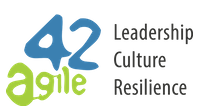How to spice up your Scrum using Improv?
Have you ever been part of a great team? A team that made you love going to work every day. A team that encouraged you to accomplish goals that you thought were near impossible.
Have you ever been part of a team from hell? A team with constant conflict and disagreements. A team where everyone was too afraid to speak the truth.
In his book “The Five Dysfunctions of a Team”, Patrick Lencioni refers to trust as a foundation and key ingredient to high performing teams. He also indicates, “Teamwork begins by building trust. And the only way to do that is to overcome our need for invulnerability.”
Improv is a great method that allows us to overcome our need for invulnerability. It allows individuals to naturally become more aware and vulnerable, which helps to build a stronger bond of trust. As defined by Wikipedia, improv ‘is the form of theatre, often comedy, in which most or all of what is performed is unplanned or unscripted: created spontaneously by the performers. In its purest form, the dialogue, action, story, and characters are created collaboratively by the players as the improvisation unfolds in present time, without use of an already prepared, written script.’
WOW, unplanned and unscripted. How often do our Scrum teams encounter challenges like these and yet they struggle to respond or move forward? Many of us think that we can’t do improv. We panic because we don’t know what to do or say. However, improv helps teams to build key skills – many of which align with the Scrum principles:
- Courage – improv encourages individuals to come out of their comfort zone and to take risks
- Openness – improv fosters collaboration and trust
- Respect – improv supports the notion of accepting and building on others’ ideas
- Focus – improv reinforces the act of staying present and listening effectively on both a verbal and an emotional basis
- Commitment – improv fosters commitment from team members to have each other’s back
Many principles that actors live by are the same principles that a high-performing agile team should live by. As stated in the Agile Manifesto values, priorities should be placed on responding to change over following a plan and on individuals and interactions over processes and tools.
Similarly, improv can also be used in an agile environment. Here are some examples of ways which you can apply improv to help your team, organization, and yourself:
- Has your daily stand up become stale and boring? – Revitalize this ceremony with spontaneity using improv.
- Stuck in a meeting on a Friday afternoon with low energy and disengaged participants? – Recharge the energy levels with a dose of improv.
- Does your team have a working agreement? – Use improv to form team agreements (e.g. how do we handle failure? how do we celebrate learnings?).
- Is psychological safety an issue in your team? – Introduce improv before a retrospective to help create an environment of “one team”.
- Forming a new team? – Help team members build personal connections by learning about each other through improv.
The list is endless but most importantly, have fun doing it. Also, just like any other exercise, make sure the teams retrospect and apply the learnings to become a high performing team!
For more improv game ideas, click here: https://www.slideshare.net/SunnyDhillon5/spice-up-your-scrum-with-improv.
If you’re interested in learning more about Scrum and Improv, you can email me at [email protected].
